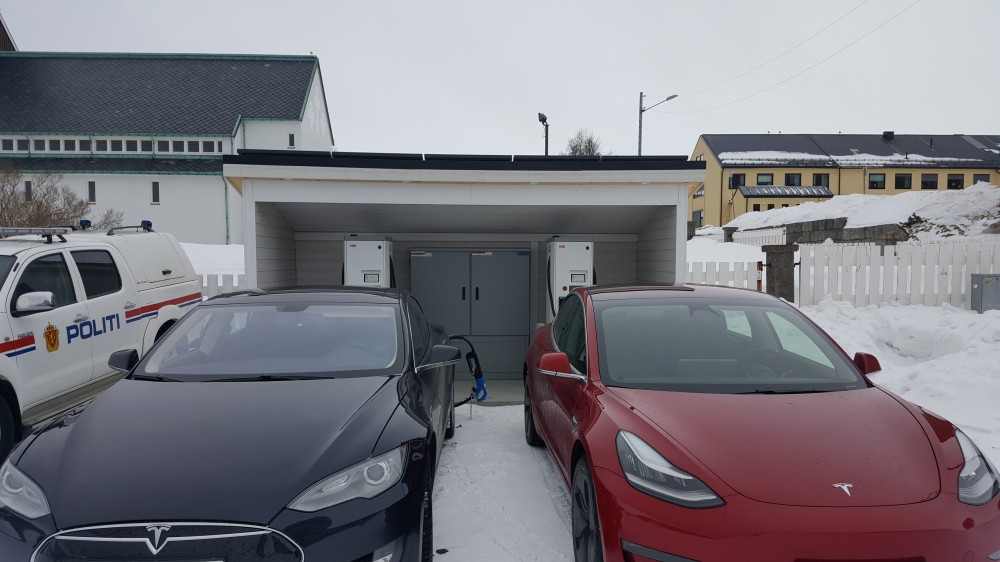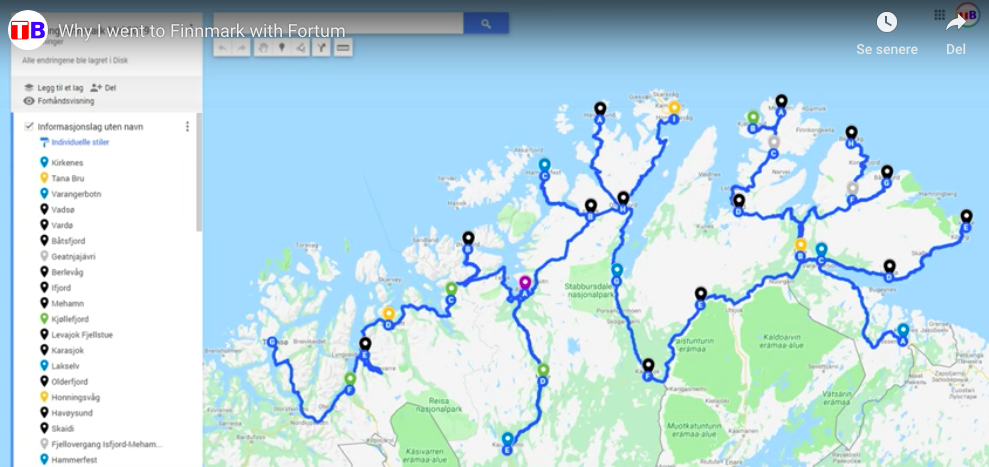Finnmark to get world’s most advanced EV charging network
Seventeen high-power 150 kW chargers and eight fast chargers will make it possible for practically all kinds of electric cars to drive anywhere in Norway’s northernmost region, even in the cold of winter.

Norwegian electric car enthusiast Bjørn Nyland has recently been on road-trip in Finnmark together with Ole Gudbrann Hempel from utilities firm Fortum looking at suitable sites for new high-power charging stations. (See video from the tour below.)
Nyland is known for producing videos featuring all kind of practical tests and tips for electric-car drivers. His YouTube channel has more than 144,000 subscribers worldwide.
While Norway as a whole is a world leader in electric vehicle adoption, its northernmost regions still lag behind.
“It’s like the chicken or the egg, because people up here they don’t want to drive electric because there is no infrastructure. And then you have the charging operators; they don’t want to invest here because there’s no one using electric vehicles,” Nyland says as the two drive across Finnmark. “Someone has to take the first step.”
Enova, the public organization managing Norway’s green-energy investment fund, recently announced a grant covering the full cost of building chargers at 25 sites in Finnmark and northern Troms, the country’s northernmost region, far above the Arctic Circle.
Fortum, a utilities firm from Finland, is already big on chargers in Scandinavia and sees Finnmark as a promising region.
“We are taking the first step, we are breaking that chain and making that change, actually, so let’s just build this thing, get it in the ground and operational,” says Hempel, the business manger for public charging in Norway for Fortum’s Charge and Drive division.
“We know that if there is a charging network, a really good charging network, people will buy electric vehicles,” Hempel says.
[Telsa in the Arctic: Range excitement]
He adds that Finnmark is the part of Norway where residents use the largest portion of their income on fossil fuels. Long distances and very cold weather result in higher fuel consumption per kilometer. Also, people in Finnmark have lower average incomes than in southern Norway.
That, according to Hempel, means they have the most to gain from switching from fossil fuel to renewable energy sources in transport.
“Finnmark has been like a desert in regards to charging infrastructure for a long time and now they will get the world’s most advanced charging infrastructure. They will get a lot of high-power chargers and chargers everywhere,” he says.

Of the 25 sites where construction will be paid for by ENOVA, 17 will have two 150 kW, one 50 kW DC and two 22 kW AC chargers. The other eight sites will have two 50 kW DC and two 22 kW AC chargers.
“Even if you have an electric vehicle that can drive a maximum 120 kilometers, you will be able to drive virtually anywhere in this part of Norway,” Hempel says with a smile as he and Nyland continue the drive with the midnight sun shining through the window of the car.
An electric car, that is.
[Squeaky-green cruise ship company says dead fish can breathe life into carbon-free goals]
Finnmark, with a population of under 75,000, is the same size as the country of Denmark, which has a population of 5.7 million.
Nyland told the Barents Observer he is convinced that with high-power chargers in place, Finnmark will see the same boost in sales of electric cars as the rest of Norway.
“Charger infrastructure in Finnmark is very important for people to convert to electric. As of today, we have many cars that could replace fossil fuel vehicles. But due to hard winter, even a Tesla will find it hard without a sufficient charger network,” Nyland says.
He adds that when the new high-power chargers are up and running, he expects Finnmark to become a highly attractive destination for electric-car drivers from all over Europe.